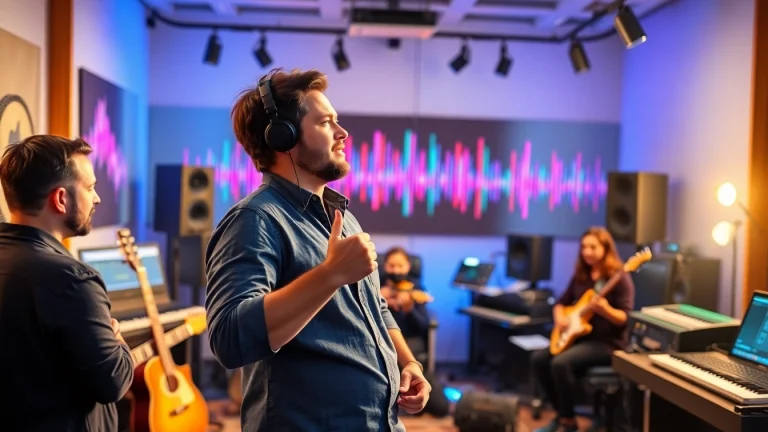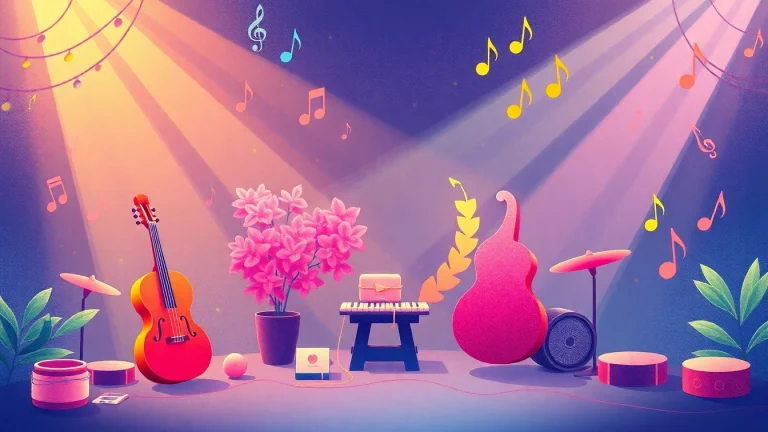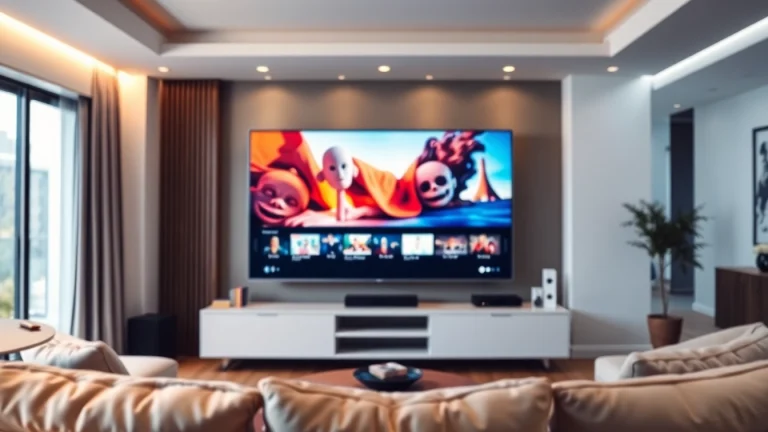
Mastering Music Pitching: Strategies to Reach Playlists and Curators Effectively
Understanding Music Pitching in the Digital Age
In today’s music landscape, artists must navigate an increasingly complex and digital-focused ecosystem. At the heart of successful music careers lies the strategy of music pitching, the process of presenting your music to curators, playlist editors, and industry influencers to gain exposure and build your fanbase. Understanding how to effectively pitch your music is not just a skill, but a vital ingredient for success in an industry where the competition is fierce, and the avenues for discovery are rapidly evolving.
What Is Music Pitching?
Music pitching refers to the process of promoting your musical works to various stakeholders, including record labels, playlist curators, music blogs, radio stations, and influencers. The ultimately objective is to secure placements in prominent playlists, features on music blogs, or radio airplay, which can significantly enhance an artist’s visibility and audience reach.
While pitching has long been a part of the music industry, the digital age has transformed how artists approach this critical task. With platforms like Spotify, Apple Music, and social media becoming dominant forces in music distribution and consumption, artists must adapt their pitching strategies to align with these new avenues. This shift not only demands awareness of the latest industry trends but also the ability to craft pitches that resonate with each unique platform and curator.
The Importance of Music Pitching for Artists
The significance of music pitching in an artist’s career cannot be overstated. In an age where listeners can access millions of songs at their fingertips, getting noticed can be a daunting task. Effective pitching can offer your music the spotlight it deserves. Here are a few key reasons why music pitching is paramount:
- Increased Visibility: Securing placements on popular playlists or blogs can introduce your music to new listeners, driving streams and increasing your audience.
- Career Advancement: Successful pitches can lead to record deals, collaborations, and other career opportunities that might not have been accessible otherwise.
- Fan Engagement: Exposure through curated lists or influential platforms often results in increased fan engagement, leading to social media follows, newsletter sign-ups, and concert attendance.
Key Platforms for Music Pitching
Several platforms have emerged as vital players in the music pitching landscape, each providing unique opportunities for artists to showcase their work. Understanding where to pitch your music is crucial to maximizing your outreach efforts. Here are some of the most vital platforms:
- Spotify: With playlists being one of the main discovery engines, pitching to Spotify playlist editors can significantly boost your reach. Spotify allows artists to submit tracks ahead of release through their Spotify for Artists portal.
- Apple Music: Similar to Spotify, Apple Music has a dedicated pitching process that requires distinct strategies to engage its curators effectively. Understanding their pitching guidelines is essential.
- YouTube: As the largest and most popular video platform, YouTube remains critical for music exposure. Engaging with channels that curate music content can yield substantial visibility.
- Music Blogs: Popular niche and genre-specific blogs often curate their playlists and can be instrumental in providing a platform for your music. Targeting blogs that align with your genre can result in valuable features.
Preparing Your Music for Pitching
Creating a Professional Demo
Your demo is often the first impression that curators and influencers have of your music, and as such, it should be polished and professional. Here are several steps to ensure your demo stands out:
- High-Quality Recording: Invest in a good recording setup or work with a professional studio. Ensure that your tracks are clean, well-mixed, and mastered to industry standards.
- Selecting the Right Tracks: Choose tracks that showcase your unique sound and potential. Tailor your selection based on the preferences of the destination platform or curator.
- Create a Relay: Sometimes, adding a brief video performance or acoustic version of a track can help to personalize your pitch and make it more engaging.
Writing an Effective Pitch Email
The art of pitching is not only confined to the music itself but also extends to how you present it. Your pitch email is your communication tool and must strike the right balance between professionalism and personal connection. Here are some key elements:
- Compelling Subject Line: An eye-catching subject line will entice the recipient to open your email. Keep it concise and directly related to your music.
- Personalization: Address the curator by name and reference something specific about their work or the playlists they curate. This shows that you’ve done your research and aren’t sending out a generic mass email.
- Concise and Clear Content: Keep your email brief. Introduce yourself, mention your music most relevant to their playlist, and include a link to your demo. Don’t inundate them with lengthy descriptions.
Utilizing a Press Kit
A press kit enhances your professionalism and provides all necessary information a curator might need to consider your pitch. Here’s what to include:
- Biography: A well-crafted biography that tells your story and gives insight into your music journey.
- Photos and Artwork: High-resolution images of yourself and your album artwork that you would like to include in promotional materials.
- Social Links: Links to your social media profiles, website, and streaming platforms to direct curators to more of your work.
- Press Coverage: Any features, reviews, or interviews that showcase your accomplishments in the industry, which lends credibility to your pitch.
Strategies for Successful Music Pitching
Identifying the Right Playlist Curators
A key element of successful music pitching is identifying the right curators who align with your style. This can significantly impact the effectiveness of your pitch. Here are a few strategies:
- Research Platforms: Use platforms like SubmitHub, Playlist Push, or dailyplaylist to find curators who accept submissions and align with your music genre.
- Connect on Social Media: Engage with curators on social media platforms like Instagram and Twitter. Show genuine interest in their content and build a rapport over time.
- Network with Other Artists: Collaborate with fellow musicians who have successfully piqued curators’ interests, as they might lend a reference or share valuable insights.
Tying Your Music to Current Trends
Keeping up with current trends can make your music more appealing to curators. Here are a few ways to effectively tie your music to the latest trends:
- Leverage Current Events: Connect your music themes to trending topics or events in the news to increase relatability. This can spark the interest of curators looking for timely content.
- Use Popular Genres: If your music can conveniently blend with trending genres or sounds, utilizing them can help appeal to a larger audience.
- Track Viral Influences: Monitor viral challenges and trends on platforms like TikTok and Instagram, gauging how your music might fit into these movements.
Building Relationships with Influencers
Influencer marketing is increasingly integral to music promotion. Building genuine relationships with influencers can yield extensive promotional opportunities. Consider the following:
- Offer Value First: When approaching an influencer, think about how you can provide value to them, whether it’s music collaboration or sharing their content on your social media.
- Engage Authentically: Respond and comment genuinely on their posts. Building a rapport can turn a simple interaction into a potential partnership.
- Be Professional: When you do reach out for collaboration, ensure your pitch is professionally crafted and clearly outlines the mutual benefits of working together.
Common Mistakes to Avoid in Music Pitching
Overpitching: Quality vs. Quantity
A common pitfall in music pitching is the urge to submit your music to as many curators as possible without regard for quality. However, overpitching can backfire. Here’s why:
- Decreased Impact: When curators receive countless submissions from the same artist, your music can get lost in the noise. Instead, focus on targeting a select group of curators with custom pitches.
- Building Reputation: If curators frequently decline your pitches, they may view your music less favorably in the future. Quality submissions foster respect and increase future opportunities.
Neglecting Personalization in Your Pitch
Sending generic pitches can be damaging to your chances of success. Curators receive numerous pitches daily and can easily spot a template approach. Here’s how to personalize effectively:
- Tailor Content: Always customize your pitch to reflect the unique interests and style of the curator you are addressing.
- Research the Curators: Take time to understand the type of music and the specific tastes of the curator you are contacting. Incorporate insights from their playlist selections into your pitch to demonstrate genuine interest.
Failing to Follow Up
Following up post-pitch is an essential but often overlooked step in the pitch process. Here’s why it matters and how to do it right:
- Timing: Wait about a week to 10 days before sending a courteous follow-up email to remind them of your pitch.
- Keep it Short: Reiterate your excitement about the potential collaboration while being respectful of their time, avoiding any pushiness.
Measuring the Impact of Your Music Pitching Efforts
Analyzing Playlist Additions and Engagement
After pitching, continuous monitoring is vital to gauge the effectiveness of your efforts. Consider these methods for analysis:
- Track Metrics: Utilize tools provided by platforms like Spotify for Artists and Apple Music to track how your music is performing in playlists and among listeners.
- Engagement Assessment: Diving deeper into listener metrics, assessing likes, shares, and comments can provide insights about how well your music resonates with the audience.
Tracking Fan Growth and Listener Metrics
In addition to analyzing playlist performance, tracking broader listener metrics can offer a clearer picture of your music’s reach. Here’s how:
- Audience Statistics: Regularly review your following on social media platforms and streaming services, looking for growth patterns over time.
- Engagement Levels: Consider how actively your audience engages with your posts and music. High engagement often correlates with successful placements.
Adjusting Your Strategy Based on Feedback
Feedback, whether from curators or listeners, is an invaluable resource for evolving your approach. Here’s how to implement feedback effectively:
- Solicit Feedback: Reach out to your network to gather insights on your pitches or music; encourage constructive criticism for meaningful improvement.
- Adapt Your Approach: Be flexible with your strategies. If certain pitches to specific curators aren’t yielding results, adapt your approach, diversifying your pitch templates or targeting other curators.


